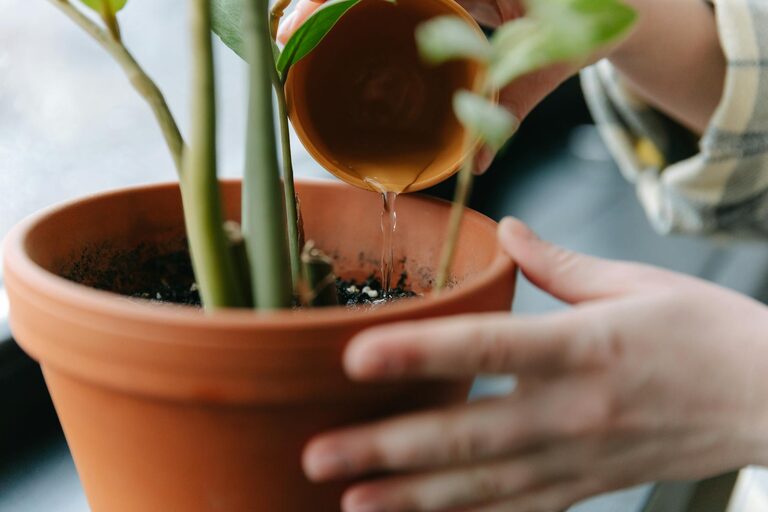Bringing houseplants into your home adds beauty, improves air quality, and can boost your mood. However, keeping them healthy requires a bit of attention and care. If you want your indoor garden to thrive, here are essential tips to help your houseplants stay vibrant and healthy.
Understanding Your Houseplant’s Needs
Every plant species has unique requirements. Getting to know your plant’s natural habitat and preferences is key to providing the right environment.
– Light: Some plants thrive in bright, indirect light while others prefer low light. For example, succulents and cacti enjoy plenty of sun, whereas ferns and snake plants can tolerate shade.
– Water: Overwatering is a common mistake. Learn how often your specific plant needs watering. Most plants prefer the soil to dry out slightly between waterings.
– Humidity: Tropical plants like higher humidity. If your home is dry, consider misting leaves or placing a humidifier nearby.
Choosing the Right Pot and Soil
The pot and soil you choose impact your plant’s health greatly.
– Drainage holes: Ensure your pot has drainage holes to prevent waterlogging, which can lead to root rot.
– Pot size: Select a pot that fits the current size of your plant, allowing space for growth. Avoid pots that are too large, as excess soil can hold too much moisture.
– Soil type: Use soil tailored for your plant. Succulents need sandy, well-draining soil, while tropical plants thrive in rich, moisture-retentive mixes.
Watering Wisely
Watering is one of the most critical aspects of plant care.
– Check the soil: Always feel the soil before watering. If the top inch is dry, it’s often time to water.
– Water thoroughly: Water until it drains from the bottom of the pot, ensuring roots get enough moisture.
– Avoid water on leaves: For some plants, water sitting on leaves can cause damage or encourage fungus.
Providing Adequate Light
Light is essential for photosynthesis and overall growth.
– Match plants to light levels: Position sun-loving plants near windows with plenty of natural light. Use east or west-facing windows for moderate light.
– Rotate regularly: Turn your plants every few weeks so all sides receive equal light and grow evenly.
– Use grow lights: In rooms lacking natural light, consider investing in grow lights designed for indoor plants.
Maintaining Proper Humidity and Temperature
Most houseplants prefer stable, moderate temperatures and humidity levels.
– Avoid drafts: Keep plants away from air conditioning vents, heaters, and drafty windows.
– Humidity: Group plants together to create natural humidity or use a pebble tray with water beneath the pot.
– Misting: For humidity-loving plants, mist their leaves regularly but avoid overdoing it.
Feeding and Fertilizing
Plants need nutrients to stay healthy, just like humans.
– Choose the right fertilizer: Use a balanced, water-soluble fertilizer formulated for houseplants.
– Feed during growth: Fertilize monthly during the growing season (spring and summer). Reduce or stop in winter when many plants rest.
– Follow instructions: Overfertilizing can harm your plants, so always follow label directions carefully.
Pruning and Cleaning
Regular maintenance helps prevent disease and keeps plants attractive.
– Prune dead or yellow leaves: Removing damaged leaves encourages new growth and improves appearance.
– Pinch back leggy growth: This keeps plants fuller and helps maintain shape.
– Clean leaves: Wipe leaves gently with a damp cloth to remove dust, which can block light and reduce photosynthesis.
Monitoring for Pests and Diseases
Healthy plants are less likely to suffer pest problems, but vigilance is important.
– Inspect regularly: Check leaves, stems, and soil for pests like spider mites, aphids, or mealybugs.
– Isolate new plants: Quarantine any new additions for a few weeks to prevent introducing pests.
– Treat early: If you notice pests, remove them with insecticidal soap or neem oil promptly.
Repotting When Needed
Plants can outgrow their containers and require repotting.
– Signs you need to repot: Roots grow out of drainage holes, soil dries out very quickly, or the plant looks crowded.
– Best time: Spring is usually the best time to repot.
– How to repot: Gently remove the plant, loosen roots if crowded, place it into a larger pot with fresh soil, and water thoroughly.
Conclusion
Keeping houseplants healthy is rewarding and easier than it might seem with the right care. Understanding your plants’ needs, watering carefully, providing proper light, and regular maintenance will help your indoor garden flourish. With these tips, you can enjoy a thriving collection of greenery that brightens your home and your day.
Happy planting!

